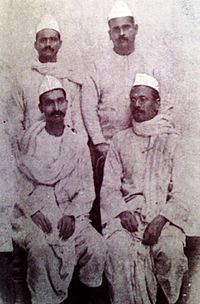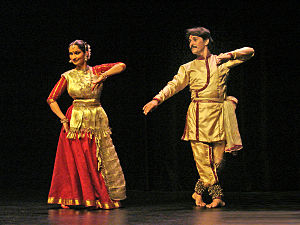Country INDIA
| |
Formation
|
·
22 March 1912
·
(Bihar Diwas)
|
Statehood
|
26 January 1950
|
Largest city
|
|
Government
|
|
• Governor
|
|
|
·
Legislative
Council 75
·
Legislative
Assembly 243
|
|
Area
|
|
• Total
|
94,163 km2 (36,357 sq mi)
|
Area rank
|
|
Population
(2011)
|
|
• Total
|
104,099,452
|
• Rank
|
|
• Density
|
1,102/km2 (2,850/sq mi)
|
• Major Ethnolinguistic Groups
|
|
GDP (2017–18)
|
|
• Total
|
₹4.88 lakh crore (US$68 billion)
|
₹38,860 (US$540)
|
|
Languages
|
|
• Official
|
|
• Additional official
|
|
INBR
|
|
BR
|
|
Website
|
|
·
a. Recognized under the Eighth
Schedule of the Constitution of India
·
b. In 15 districts
|
|
BIHAR is a state in eastern India. It is the third-largest state by population and twelfth-largest by territory, with an area of 94,163 km2 (36,357 sq mi). It is contiguous with Uttar Pradesh to its west, Nepal to the north, the northern part of West Bengal to the east, and with Jharkhand to the south. The Bihar plain is split by the river Ganges, which flows from west to east.[11] Three main cultural regions converge in the state: Magadh, Mithila, and Bhojpur. Bihar is also the world's third-most populous subnational entity.
On 15 November 2000, southern Bihar was ceded to form the new state of Jharkhand. Only 11.3% of the population of Bihar lives in urban areas, which is the lowest in India after Himachal Pradesh. Additionally, almost 58% of Biharis are below the age of 25, giving Bihar the highest proportion of young people of any Indian state.
In ancient and classical India, the area that is now Bihar was considered a centre of power, learning, and culture. From Magadha arose India's first empire, the Maurya empire, as well as one of the world's most widely adhered-to religions: Buddhism. Magadha empires, notably under the Maurya and Gupta dynasties, unified large parts of South Asia under a central rule. Another region of Bihar is Mithila which was an early centre of learning and the centre of the Videha kingdom.
Since the late 1970s, Bihar has lagged far behind other Indian states in terms of social and economic development. Many economists and social scientists claim that this is a direct result of the policies of the central government, such as the freight equalization policy,[24][25] its apathy towards Bihar, lack of Bihari sub-nationalism, and the Permanent Settlement of 1793 by the British East India Company. The state government has, however, made significant strides in developing the state. Improved governance has led to an economic revival in the state through increased investment in infrastructure, better health care facilities, greater emphasis on education, and a reduction in crime and corruption.
Vidyapati (1352–1448), also known by the sobriquet Maithil Kavi Kokil (the poet cuckoo of Maithili), was a Maithili and Sanskrit poet, writer and polyglot.
Vidyapati's influence was not just restricted to Maithili and Sanskrit literature but also extended to other Eastern literary traditions.[2] The language at the time of Vidyapati, the prakrit-derived late abahatta, had just begun to transition into early versions of the Eastern languages such as Maithili, Bhojpuri etc. Thus, Vidyapati's influence on making these languages has been described as "analogous to that of Dante in Italy and Chaucer in England
Vidyapati was born to a Shaivite Brahmin family in the village of Bisfi in the present-day Madhubani district of Mithila region of Bihar, India.He was the son of Shri Ganapati Thakur who was a Maithil Brahmin. The name Vidyapati is derived from two Sanskrit words, vidya ("knowledge") and pati ("master"), connoting thereby "a man of knowledge".
There is confusion as to his exact date of birth due to conflicting information from his own works and those of his patrons.His father, was a priest in the court of Rāya Gaṇeśvara, the reigning chief of Tirhut. A number of his recent ancestors were notable in their own right including his great-grandfather, Devāditya Ṭhakkura who was a Minister of War and Peace in the court of Harisimhadeva. Vidyapati himself worked in the courts of various chiefs in North Bihar.He is recorded as having two wives, three sons and four daughters.
The Kīrttilatā makes reference to an incident where the Oiniwar King, Raja Gaṇeśvara, was killed by the Turkish commander, Malik Arsalan in 1371. By 1401, Vidyapati requested the help of the Jaunpur Sultan in overthrowing Arsalan and installing Gaṇeśvara's sons, Vīrasiṃha and Kīrttisiṃha, on the throne. With the Sultan's assistance, Arsalan was deposed and Kīrttisiṃha, the oldest son, became the ruler of Mithila
Paintings
There are several traditional styles of painting practiced in Bihar. One is Mithila painting, a style used in the Mithila region of Bihar. Traditionally, this form was practiced mainly by women, passed down generation to generation. Painting was usually done on walls during festivals, religious events, births, marriages, and other cultural milestones.[118] It was traditionally done on the plastered walls of mud huts, and is also done on cloth, handmade paper and canvas. Famous Mithila painters include Smt Bharti Dayal, Mahasundari Devi, the late Ganga Devi, and Sita Devi.
Mithila painting is also called Madhubani art. It mostly depicts human beings and their association with nature. Common scenes illustrate deities and Saraswati from ancient epics, celestial objects, and religious plants like Tulsi, and scenes from the royal court and social events. Generally, no space is left empty.
The Patna School of Painting (Patna Salaam), sometimes called "Company Painting", flourished in Bihar during the early 18th to mid-20th centuries. It was an offshoot of the Mughal Miniature School of Painting. Those who practiced this art form were descendants of Hindu artisans of Mughal painting. Facing persecution from the Mughal Emperor, Aurangzeb, these artisans found refuge, via Murshidabad, in Patna during the late 18th century. Their art shared the characteristics of the Mughal painters, expanded subject matter from court scenes to bazaar scenes, daily life and ceremonies. They used watercolours on paper and on mica. This school of painting formed the basis for the formation of the Patna Art School under the leadership of Shri Radha Mohan. The school is an important centre of the fine arts in Bihar.
Medieval period
Buddhism in Magadha went into decline due to the invasion of Muhammad bin Bakhtiyar Khalji, during which many of the viharas were destroyed along with the universities of Nalanda and Vikramashila. Some historians believe that thousands of Buddhist monks were massacred during the 12th century. D. N. Jha suggests, instead, that these incidents were the result of Buddhist–Brahmin skirmishes in a fight for supremacy. After the fall of the Pala Empire, the Chero dynasty ruled some parts of Bihar from the 12th century until Mughal rule in the 16th century.[In 1540, the great Pathan chieftain, Sher Shah Suri, took northern India from the Mughals and declared Delhi his capital.
From the 11th century to the 20th century, Mithila was ruled by various indigenous dynasties. The first of these were the Karnatas, followed by the Oiniwar dynasty and Raj Darbhanga. It was during this period that the capital of Mithila was shifted to Darbhanga.
The tenth and the last guru of Sikhism, Guru Gobind Singh, was born in Patna in 1666. With political instability in the Mughal Empire following Aurangzeb's death in 1707, Murshid Quli Khan declared Bengal's independence and named himself Nawab of Bengal.

Languages
Hindi is the official language of the state.[6] Urdu is the second official language in 15 districts of the state.[7] Maithili (including its dialect Bajjika), Bhojpuri, Angika and Magahi are also widely spoken.[73][74] Maithili is a recognised regional language of India under the Eighth Schedule to the Constitution of India.[75] Proponents have called for Bhojpuri and Magahi to receive the same status.[76]
Government and administration
The constitutional head of the government of Bihar is the governor, who is appointed by the President of India. Executive power rests with the chief minister and their cabinet. The political party or coalition of political parties having a majority in the Legislative Assembly forms the government.
The head of the bureaucracy of the state is the chief secretary, under whom a hierarchy of officials is drawn from the Indian Administrative Service, Indian Police Service, Indian Forest Service, and different wings of the state civil services. The judiciary is headed by the Chief Justice. Bihar has a High Court which has been functioning since 1916. All the branches of the government are located in the state capital, Patna.
The state is administratively divided into 9 divisions and 38 districts. Bihar has 12 municipal corporations, 49 nagar parishads (city councils), and 80 nagar panchayats (town councils)











No comments:
Post a Comment